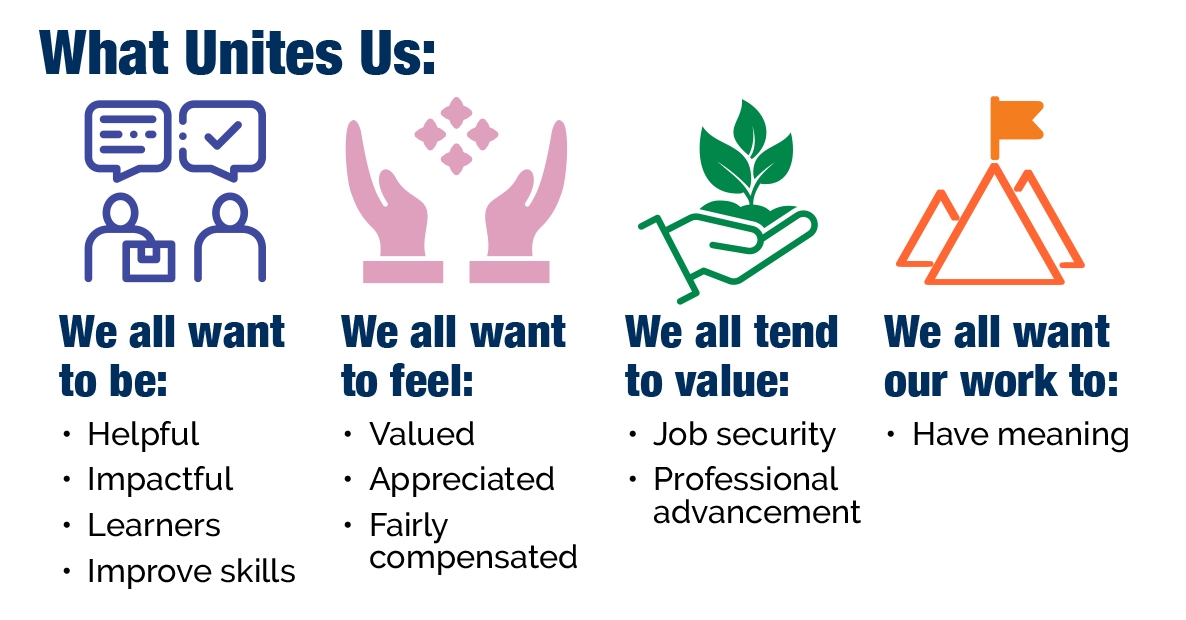In Part 1 of our series on multigenerational workplaces, we highlighted the unprecedented reality of five generations coexisting in today’s workforce and their unique characteristics. In Part 2, we'll unravel the shared desires and expectations that transcend age barriers. From Traditionalists to Generation Z, it turns out that amidst the differences, there are striking similarities in what employees seek from their work experience.
What Unites Us is Greater Than What Divides Us
Of course, there are differences between generations. World events, economic conditions, trends, and cultural norms of each era have influenced how people of each generation think and behave. We have been shaped by different historical events. We grew up consuming different media and using different technologies. These differences are real, but research shows that they have little importance when it comes to predicting how we act or what motivates us at work. Numerous studies have found only slight differences in job attitudes and values between the generations. We all want to be helpful, have an impact, learn, and improve our skills. We want to feel valued, appreciated, and fairly compensated. We all tend to value job security and want to see a path forward toward professional advancement. We all want our work to have meaning, although how we define what makes work “meaningful” may differ somewhat from one generation to the next.
Recognizing these commonalities can form the basis for a more unified workplace.
How to Cater to and Work Together
Embrace Diversity: Acknowledge and appreciate the diversity of thought, experience, and skills each generation brings.
Communication is Key: How we communicate has dramatically changed over the years, and everything from slang to style to format (phone, email, text, emojis) can affect how employees interpret messages. Savvy managers will communicate using multiple methods, taking note of how each individual responds to different communications. Encourage collaboration and teamwork to benefit from diverse perspectives.
Flexible Work Arrangements: With a multigenerational workforce, employees span the full range of life stages. Some may be raising young kids, while others are caring for ailing parents. Some may be in new relationships, while others are going through a divorce. Cater to different work styles by offering flexible schedules.
Mentorship Programs & Professional Growth: Invest in employee development, mentorship programs between generations (even a reverse mentoring program where the younger generations mentors an older generation on topics such as social media, technology), and skill-building workshops fostering a culture of continuous learning and growth.
Recognition and Rewards: Implement recognition programs that celebrate achievements and contributions, catering to the preferences of each generation.
Offer Competitive Benefits: Regardless of their generation, all employees value a benefits package that helps them perform at their best. Healthcare coverage and perks such as flexible working options, gym memberships, wellness programs, childcare assistance, and robust career development programs are appreciated by employees of all generations.

What Unites Us
With more generations than ever working side by side, employers are positioned to create strong, innovative teams rich with diverse thought, experience, and expertise. Look at the best traits that each generation — and each individual — brings to the table and then adapt accordingly.

